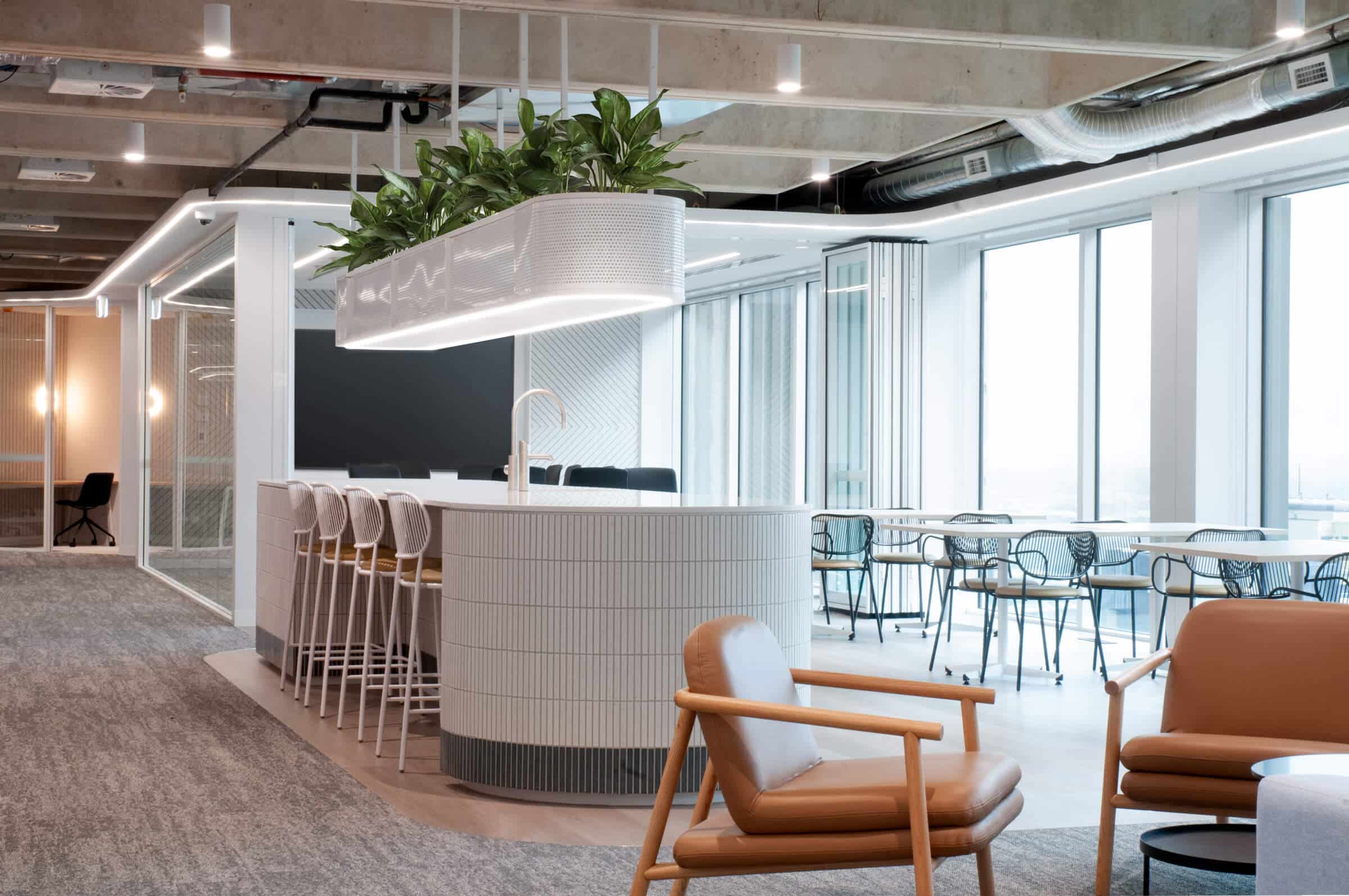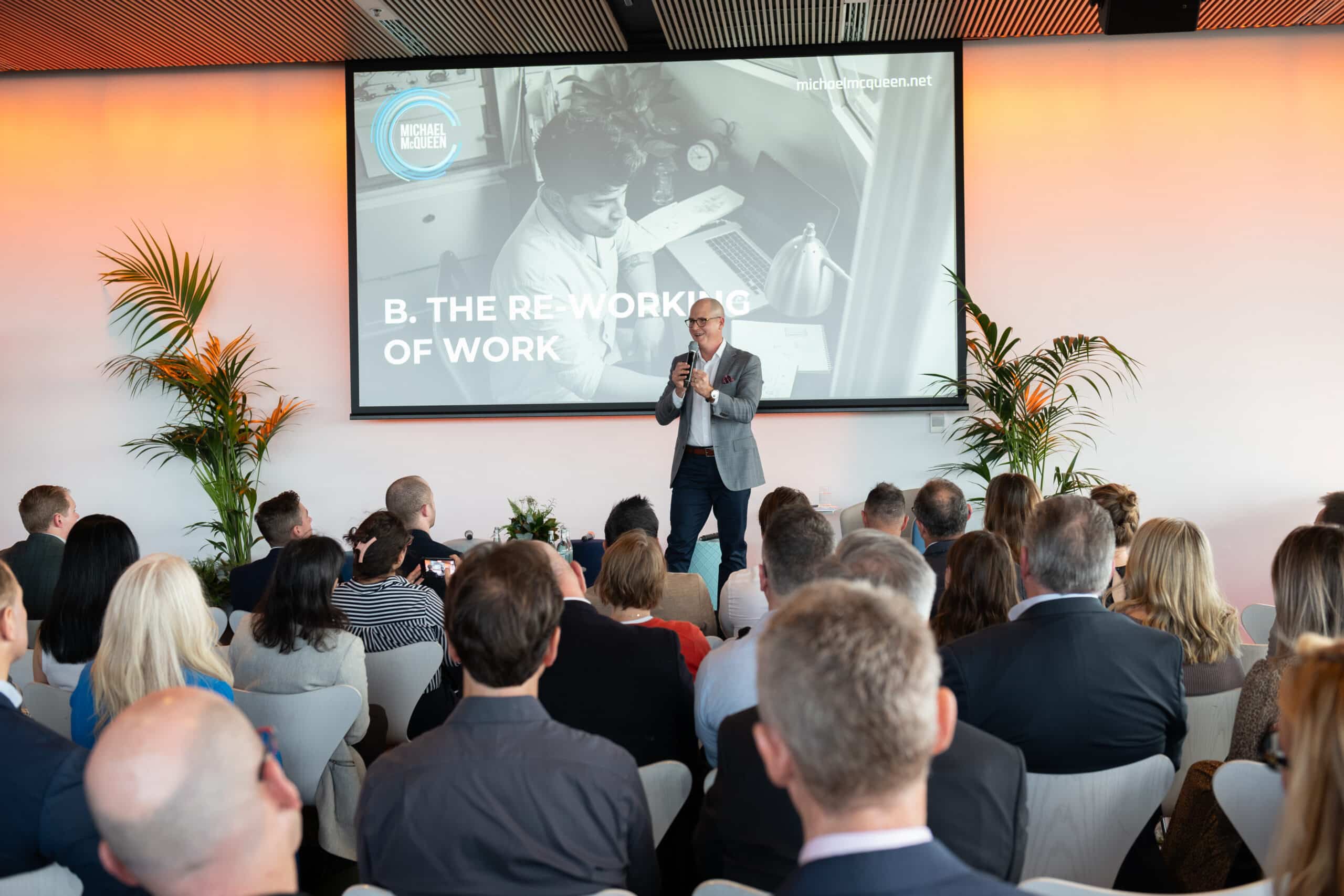
In today’s dynamic business landscape, where competition is fierce and talent is the driving force, forward-thinking companies are seeking out new tools to future-proof their workplace and the people who work in it. One such tool that is profoundly influential is a well-crafted workplace strategy.
A comprehensive workplace strategy has the power to foster collaboration, productivity and deliver an outstanding return on investment.
Speaking to Spaceful’s approach to workplace strategy, recently appointed Workplace Strategy Director Tica Masuku comments, “At Spaceful, we understand the pivotal role of workplace strategy in driving organisational success. Our unique approach leverages ethnographic research models, which delve deeply into understanding the intricacies of activities and behaviours transpiring within the workplace.”
Tica adds, “As workplace strategists, we are often asked the same questions by businesess: “What are other organisations doing? What is best practice?” The truth is, the key reason for undertaking a workplace strategy process is to understand what is most important for your specific business. The crux of undertaking a workplace strategy lies in employing ethnographic research to deeply comprehend workplace activities and behaviours. When we work with our clients, we immerse ourselves in the day-to-day experiences of employees, closely observing their interactions, rituals, and work processes. This foundation informs decision-making, optimises space design, and future-fits the space.”
By delving into the specific activities vital for your business and understanding what drives your workforce and organisational success, we identify the guiding North Star. This aligns stakeholders and facilitates the creation of an environment primed for organisational success.
“…the key reason for undertaking a workplace strategy process is to understand what is most important for your specific business.“
The elements of a workplace strategy
Assess your current workplace: The first step in developing an effective workplace strategy is to assess the current workspace thoroughly. This involves evaluating the layout, functionality and utilisation of space. Understanding the strengths and weaknesses of the current setup provides valuable insights into areas that are working, and those that aren’t.
Define your business goals: A successful workplace strategy must align with the business’ broader objectives. By setting clear and measurable goals, such as improving collaboration, boosting productivity, or enhancing employee well-being, organisations can ensure that their fit out is purposefully designed to support these objectives.
Factor in employee ways of working: Employees should be at the core of any organisation and their input is invaluable when designing a workplace strategy. Conducting surveys, workshops and one-on-one interactions help uncover employees’ work preferences, workstyles and needs, allowing for a workspace that encourages engagement and productivity, and empowers all team members.
Partner with workplace experts: To create a workplace strategy that truly meets the business’ unique needs, it is essential to collaborate with workplace experts before embarking on a fit out. Spaceful’s unique methodology encompasses Strategy, Property, Design and Delivery, ensuring a comprehensive approach to workplace optimisation throughout the entire fit out process.
When is the right time for workplace strategy?
Lease Expiry: As lease contracts approach expiration, it provides an excellent opportunity to reevaluate the workspace and design a strategy that meets the changing needs of the organisation.
Relocation: During a relocation, businesses have the chance to start afresh and design a workspace that aligns with their evolving goals and company culture.
Company Growth (or downsizing): As a company’s size changes, its workspace requirements change. Implementing a workplace strategy can accommodate growth and ensure that the workspace remains supportive and efficient, while the right property choices can identify cost savings to the business.
Change in Business Strategy: Undertaking a workplace strategy during a change in business direction is a strategically opportune moment. It can maximise the positive impact of the transition by ensuring that the physical and cultural aspects of the workplace align with new goals, optimise resource allocation, and integrate cultural shifts.
Common misconceptions
There is a common misconception that can deter businesses from embracing a robust workplace strategy at the outset of their fit-out journey. Some might say that it is a time-consuming and resource-draining process that only benefits larger corporations with a sizeable workforce.
In reality, workplace strategy can be tailored to fit the specific goals of any organisation, making it an accessible and valuable investment for businesses of all sizes.
So, who benefits from a workplace strategy?
“An effective workplace strategy creates opportunities that celebrate employee well-being and amplify their potential. By creating a space that encourages flexibility and nurtures collaboration, we can cultivate an environment where employees feel truly valued and supported – that’s where the magic happens. When your employees feel supported at work, they are more committed, more productive and they become more invested in the success of the wider business as a result.”
Who benefits from a workplace strategy
Employees: Employees are the driving force behind any successful business. A thoughtfully designed workplace strategy can lead to increased flexibility, improved work-life balance and enhanced well-being, which ultimately boosts employee engagement and satisfaction.
Businesses: Workplace strategy directly impacts a company’s bottom line. A well-designed workspace has been proven to be a gateway to increased productivity and business success. An intelligently designed workspace is also a powerful tool for attracting and retaining top talent. In an increasingly competitive job market, a workplace that prioritises employee well-being can be a crucial differentiator that positions your company as an employer of choice.
Stakeholders: Workplace strategies have a ripple effect on all stakeholders. Aligning your workplace strategy with your organisation’s environmental, social and governance (ESG) goals, is a concrete way of delivering on your commitment to responsible practices and to ensuring the long-term success of your business.
Planet: One of the most significant opportunities of a well-crafted workplace strategy is the ability to champion sustainability. We already know that adopting sustainable office design pays dividends in myriad ways. From efficient energy usage and responsible material choices, a green workplace strategy contributes to a healthier planet and sets an example for responsible resource management. Learn more about how Spaceful incorporated sustainability into Law Council’s workplace strategy.
The hallmarks of a successful workplace strategy
A successful workplace strategy is unique to each organisation, but some key indicators of success include:
- Employee satisfaction and engagement: A well-crafted workspace that caters to employee needs fosters higher levels of job satisfaction and engagement.
- Improved performance and efficiency: A strategic workplace design can enhance employee productivity and streamline operations, leading to improved overall business performance.
- Employee churn and retention rates: A positive work environment not only increases talent retention rates and thus saving on recruitment costs, but also ensuring the retention of knowledge within the business – something that takes a long time to rebuild once lost.
- Achievement of unique business goals: A successful workplace strategy aligns with the organisation’s specific objectives, ensuring that the workspace becomes a catalyst for achieving those goals.
A strategic workplace strategy is a powerful tool that can propel businesses towards success. And if you’ve got this far, you’re probably interested to know what Workplace Strategy can do for your business.
Reach out to our expert team to learn how we can transform your workspace.
With the right partner, your business can design a workspace that reflects your organisation’s vision and values, setting you on a path towards lasting success.


